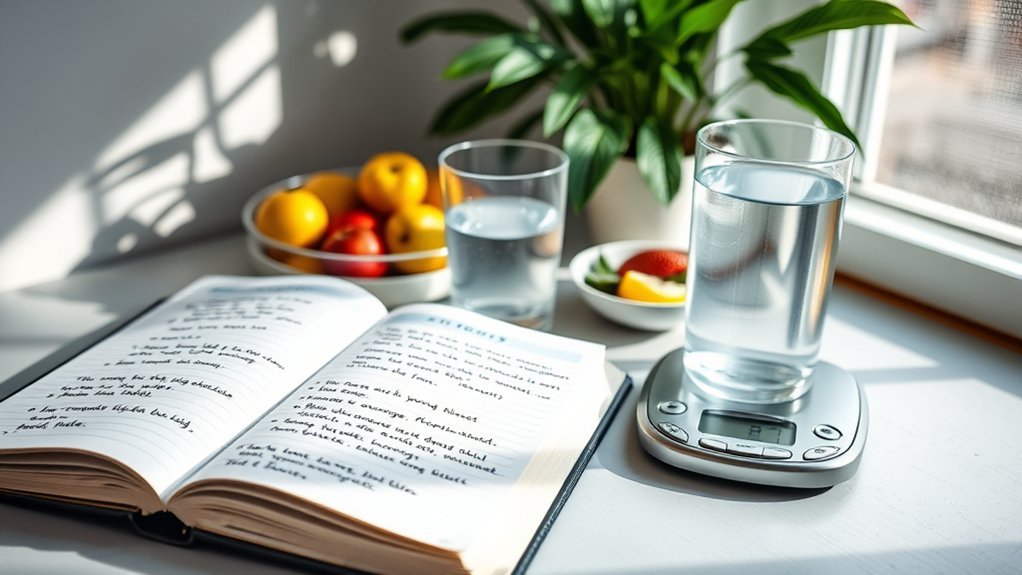It’s interesting how many new parents find themselves confused about formula amounts, just as they start to feel more comfortable with their baby’s routine. To guarantee your little one gets the right nutrition, it’s essential to understand how to measure formula accurately and recognize their hunger cues. You might be surprised by some common mistakes that could affect their growth. Let’s explore effective strategies to keep your baby well-fed and thriving.
Understanding Formula Measurements
When it comes to understanding formula measurements, getting the proportions right is crucial for both safety and efficacy. Accurate measurement guarantees that the ingredients interact properly, enhancing the formula’s effectiveness. Always use standardized units like milliliters or grams for precision, and familiarize yourself with conversion factors if you’re switching between systems. Double-check your calculations and consider using a digital scale or graduated cylinder for better accuracy. If you’re mixing ingredients with varying densities, remember that volume doesn’t always equate to weight. For example, a cup of flour weighs less than a cup of sugar. Finally, always refer to reliable resources or guidelines specific to your formula to avoid mishaps and guarantee ideal results.
Choosing the Right Tools for Accurate Measurement
How can you guarantee your measurements are spot-on? Choosing the right tools is essential. Invest in a high-quality digital scale for weighing ingredients; it offers precision that traditional scales can’t match. For liquid measurements, use clear measuring cups marked with accurate measurements, and avoid using opaque containers that can mislead you. Don’t forget about measuring spoons; stainless steel or durable plastic options provide reliability. Additionally, keep your tools clean and calibrated to maintain accuracy. If you regularly use dry ingredients, a set of dry measuring cups will assure you scoop the right amounts. By selecting the appropriate tools and maintaining them, you’ll enhance your measurement accuracy and improve your overall formula results.
Common Mistakes to Avoid
Even with the right tools, mistakes can still creep into your measurements. You might accidentally use the wrong scoop size or misread the measurement scale. Being aware of these common pitfalls can save you time and frustration.
| Mistake | Solution |
|---|---|
| Using the wrong scoop | Double-check scoop size |
| Not leveling the scoop | Use a flat edge for accuracy |
| Ignoring expiration dates | Regularly check product dates |
Adjusting Formula Amounts Based on Growth
As your baby grows, adjusting formula amounts becomes essential to assure they receive the proper nutrition. Monitoring their growth and hunger cues helps assure you’re providing the right amount of formula. Here are three key considerations for adjusting formula amounts:
- Age and Weight: Formula needs change as your baby ages; generally, they should consume about 2.5 ounces of formula per pound of body weight each day.
- Hunger Cues: Look for signs like sucking on fists or increased fussiness; these may indicate your baby needs more formula.
- Growth Spurts: Be aware of periods of rapid growth, which often require increased formula intake to support your baby’s development.
Consulting With Pediatricians for Personalized Guidance
While you can gather a lot of information about formula feeding from various sources, consulting with your pediatrician is crucial for tailored advice that suits your baby’s unique needs. Your pediatrician can assess your child’s growth, weight gain, and overall health to recommend the right formula type and amount. They’ll consider factors like your baby’s age, dietary restrictions, and any potential allergies. Don’t hesitate to discuss your concerns or ask questions about feeding schedules or signs of hunger. Regular check-ups provide an opportunity to adjust your baby’s formula intake based on their development. Remember, every baby is different, and personalized guidance guarantees you’re providing the best nutrition for your little one’s growth and well-being.
Frequently Asked Questions
How Often Should I Check My Baby’s Weight?
You should check your baby’s weight regularly, ideally once a week during the first few months. This guarantees they’re growing properly and helps you spot any potential issues early on. Trust your instincts, too!
Can I Mix Different Formula Brands?
You can mix different formula brands, but it’s best to consult your pediatrician first. Each brand has unique ingredients and nutrients, so ensuring your baby gets a balanced diet is important for their growth.
What Is the Shelf Life of Opened Formula?
Once upon a time, you’d find opened formula lasts about 24 hours in the fridge. After that, it loses nutrients and safety. Always check expiration dates before using, and trust your instincts for your baby’s health.
Is It Safe to Warm Formula in the Microwave?
No, it isn’t safe to warm formula in the microwave. Microwaving can create hot spots, risking burns. Instead, use a bottle warmer or warm water bath for even heating and guarantee your baby’s safety.
How Do I Transition Between Formula Types?
Shifting between formula types isn’t rocket science. Start by mixing the new formula with the old, gradually increasing the new while decreasing the old over several days. Your baby’s tummy will appreciate the gentle approach!
Conclusion
In the journey of parenthood, ensuring your baby gets the right formula can feel like maneuvering through a maze. By understanding measurements, using the right tools, and avoiding common pitfalls, you can confidently feed your little one. Adjusting their intake during growth spurts is essential, just like a gardener tends to their plants. Always remember, your pediatrician is your trusted guide in this process, helping you cultivate a healthy start for your baby as they flourish.
